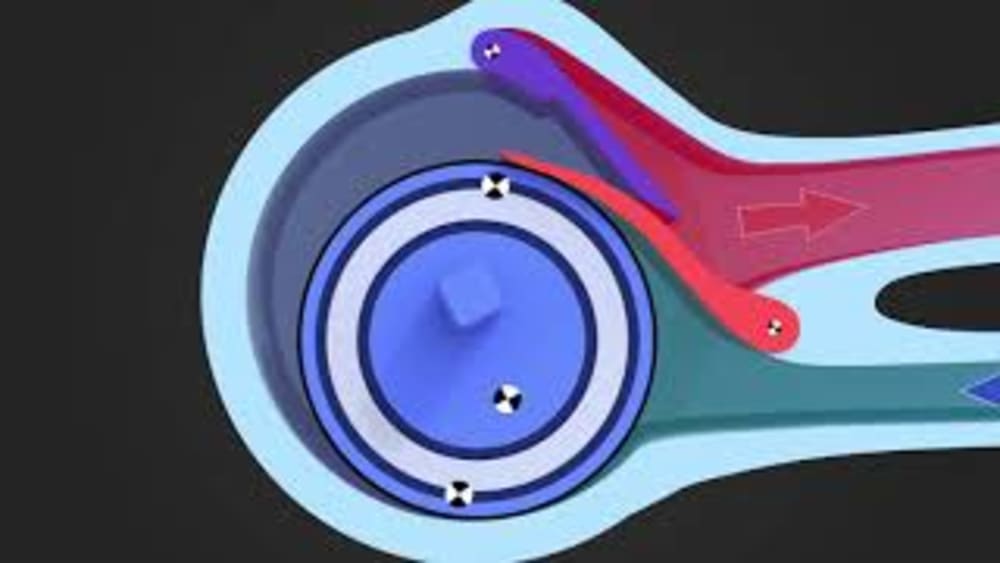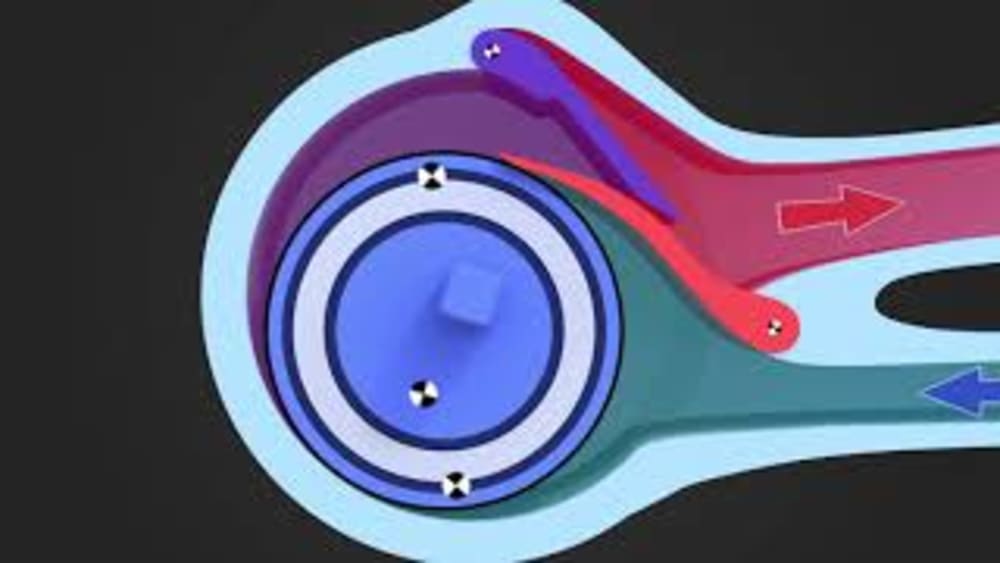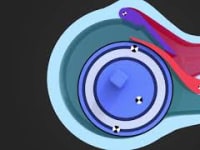This new concept is a highly efficient pump, charger or motor for gases and fluids with an extremely simple design.
It consists of only a handful of parts and requires neither gears nor micro-precision machining nor complicated manufacturing processes.
Design:
A piston is eccentrically rolling on the inner wall of a cylindrical housing. This piston is cylindrical yet smaller in diameter than the housing. An elastic element - internally mounted or as outer layer - may ensure that the piston is constantly touching the inner wall of the housing. Thus, a sickle shaped working room is formed between the housing and the piston. This volume is moved forward in the same rotational direction as the propelling axle. The front and rear of the housing faces are closed with covers (upper cover not shown). They contain the bearings of the axle. A control flap (red) is mounted between the inlet and the outlet opening and touching the rolling piston with its free end. Another flap (blue) is mounted in the opposite direction in the housing wall. It may touch the control flap and serves as a type of reed valve or back flow preventer.
Function:
Fluid enters via the inlet duct running the complete length of the housing. The fluid is pushed forward by the rolling piston and exits via the outlet opening. To prevent the fluid from flowing back, flaps are employed. The control flap is pressed against the piston either by the prevailing pressure or by the reedvalve flap or by an elastic element. When the fluid in the working volume has enough pressure the reedvalve flap is lifted off the control flap and the fluid can exit. The opening is automatically controlled by pressure, flow and force on the reed flap. Then the reedvalve flap will return to touch the control flap again either actuated by the pressure or some spring force.
Advantages:
- Extremely simple mechanical design.
- Tightness ensured through parts that are actually touching.
- Operating even at high rotational speeds since closing forces for the flaps are depending on differential pressures, area and weight of the flaps.
- Movement of the flaps versus each other may use a gear-like surface design thus greatly reducing or even eliminating friction and wear.
- Eccentrical movement of the piston results in rather slow speed of piston faces versus housing covers and allows for simple seals.
- Oil-free operation possible.
- Transported volume of the fluid can be determined by the sizes of the housing and piston or the rotational speed.
- Continuous inlet fluid flow when two rolling pistons are employed phased 180°.
Scope of possible usage:
- compressor:
- AC compressor
- mechanical supercharger for charging combustion engines
- small compressors for air or gases
- multi stage compressors for hydrogen, pressurized air, oxygen supply et al.
- vacuum pump
motor:
- energy recuperation while lowering from high pressure
- air motor
fuel cells:
- air supply, energy recuperation from from exhaust and supplied hydrogen
Video
Like this entry?
-
About the Entrant
- Name:Ingo Janthur
- Type of entry:individual
- Patent status:pending








